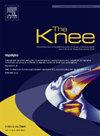Growth disturbance in paediatric anterior cruciate ligament reconstruction
IF 2
4区 医学
Q3 ORTHOPEDICS
引用次数: 0
Abstract
Anterior cruciate ligament (ACL) reconstruction in skeletally immature patients represents a significant challenge due to the risk of growth disturbance, including limb length discrepancy (LLD) and angular deformity (AD). Although rare, the consequences of such complications can be substantial. Contributing factors include inadequate clinical and radiological preoperative assessment and insufficient postoperative monitoring.
Methods
This review synthesizes the current understanding of growth disturbances after paediatric ACL reconstruction, examining their incidence, pathophysiology, and technical considerations. Growth anomalies, categorized as arrest (type A), overgrowth (type B), or tethering effect (type C), arise from physeal damage, periosteal disruption, or tunnel malposition, during autograft harvesting, bone tunnels placement or graft fixation.
Results
Surgical technique is crucial, with disturbances reported across transphyseal, all-epiphyseal, and extraosseous reconstructions, regardless of whether bone or soft tissue grafts are used. Meta-analyses indicate low overall rates of LLD and AD; however, reporting is complicated by heterogeneous definitions and follow up protocols.
Conclusions.
No single technique has demonstrated superiority in preventing growth disturbances, and most complications correlate with technical errors rather than the approach itself. Accurate assessment of growth potential – utilizing bone age, clinical markers, and radiographic tools – is paramount for surgical planning. Postoperative surveillance with clinical and full-length standing radiographs of the lower limbs is strongly recommended until skeletal maturity. While most growth disturbances are subclinical or self-limiting, significant anomalies may necessitate observation, guided growth procedures, or corrective osteotomy. Until high-level comparative studies are available, meticulous surgical technique and vigilant follow up are essential to minimize complications in this vulnerable population.
儿童前交叉韧带重建的生长障碍
由于存在生长障碍的风险,包括肢体长度差异(LLD)和角畸形(AD),骨未成熟患者的前交叉韧带(ACL)重建是一项重大挑战。虽然罕见,但这种并发症的后果可能是严重的。影响因素包括不充分的临床和放射术前评估和不充分的术后监测。方法本文综述了目前对儿童前交叉韧带重建后生长障碍的认识,探讨了其发病率、病理生理和技术考虑。生长异常,分类为停止(A型)、过度生长(B型)或系缚效应(C型),发生于自体移植物收获、骨隧道放置或移植物固定期间的骨骺损伤、骨膜断裂或隧道错位。结果手术技术是至关重要的,无论使用骨或软组织移植物,都有跨骨骺、全骨骺和骨外重建的干扰报道。荟萃分析显示LLD和AD的总体发生率较低;结论:没有一种技术在预防生长障碍方面具有优势,大多数并发症与技术错误有关,而不是方法本身。准确评估生长潜力——利用骨龄、临床标志物和放射学工具——对手术计划至关重要。强烈建议术后用临床和下肢站立x线片进行监测,直至骨骼成熟。虽然大多数生长障碍是亚临床或自限性的,但明显的异常可能需要观察,引导生长手术或矫正截骨。在获得高水平的比较研究之前,细致的手术技术和警惕的随访对于减少这一脆弱人群的并发症至关重要。
本文章由计算机程序翻译,如有差异,请以英文原文为准。
求助全文
约1分钟内获得全文
求助全文
来源期刊

Knee
医学-外科
CiteScore
3.80
自引率
5.30%
发文量
171
审稿时长
6 months
期刊介绍:
The Knee is an international journal publishing studies on the clinical treatment and fundamental biomechanical characteristics of this joint. The aim of the journal is to provide a vehicle relevant to surgeons, biomedical engineers, imaging specialists, materials scientists, rehabilitation personnel and all those with an interest in the knee.
The topics covered include, but are not limited to:
• Anatomy, physiology, morphology and biochemistry;
• Biomechanical studies;
• Advances in the development of prosthetic, orthotic and augmentation devices;
• Imaging and diagnostic techniques;
• Pathology;
• Trauma;
• Surgery;
• Rehabilitation.
 求助内容:
求助内容: 应助结果提醒方式:
应助结果提醒方式:


